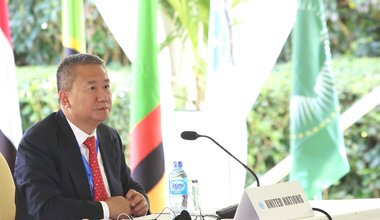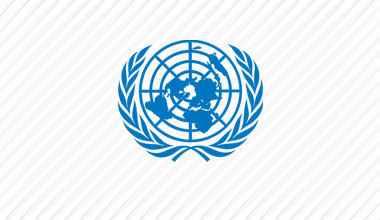Media Monitoring - OSESG-GL, 19 November 2014
Seven ideas to help end the FDLR rebel group in Congo
Posted by Enough Team
18 November 2014 - In a new report, “How to Dismantle a Deadly Militia” the Enough Project sets out seven key non-military approaches to help ending the FDLR’s ability to continue to threaten peace and security in eastern Congo and the region.
The Enough team just spent the past six months interviewing armed commanders, civil society leaders, diplomats, ex-combatants, refugees, and military experts in eastern Congo on the topic of how to help end the deadly FDLR armed group. Following this research, we are releasing this report, offering seven policy proposals for diplomats such as U.S. Special Envoy Russ Feingold, UN Special Envoy Said Djinnit, and others to take action on.
The research found that the armed group in the Democratic Republic of the Congo known as the FDLR is currently regrouping, mobilizing political support, and continuing to pose a threat to regional security. The FDLR (a French acronym for “Forces démocratiques de libération du Rwanda”) is one of the most prominent and abusive armed groups in Congo and Rwanda, formerly known as the Interahamwe/ex-FAR and ALiR. Several of its leaders were involved in helping perpetrate the Rwandan genocide, and it has committed repeated massacres against civilians in eastern Congo. Several currently active armed groups in Congo state that combatting the FDLR is the reason they themselves remain active.
The UN Security Council and regional African governments have set a deadline for the FDLR to fully disarm by January 2, 2015 or face military action. While it is unclear who exactly will undertake this military action, as Congo and the troop-contributing countries of the UN Intervention Brigade (mainly South Africa and Tanzania) have hesitated to use force against this stated enemy of Rwanda, international diplomats and regional governments, including Congo, can take action on several non-military fronts.
Taking a military approach to ending the FDLR presents a significant set of issues, most notably the fact that the FDLR embeds itself in local communities and refugee populations, creating a legitimate risk that counter-FDLR operations will cause civilian casualties. This risk can be mitigated if operations using special forces target the FDLR leadership and also incorporate strong civilian protection measures. Since the defeat of the M23 rebel group in November 2013 [LINK to blog?], the FDLR has received significant attention in both the region and the broader international community as the next main armed group to address.
This attention, however, has translated into little policy action.
Although the FDLR claims that its fighters are in the process of disarming, the group has failed to meet several deadlines set by the UN Security Council and regional African governments. Evidence from UN experts and findings from six months of Enough Project field research in Congo suggest that the FDLR’s current strategy is fo
 ONU
ONU



